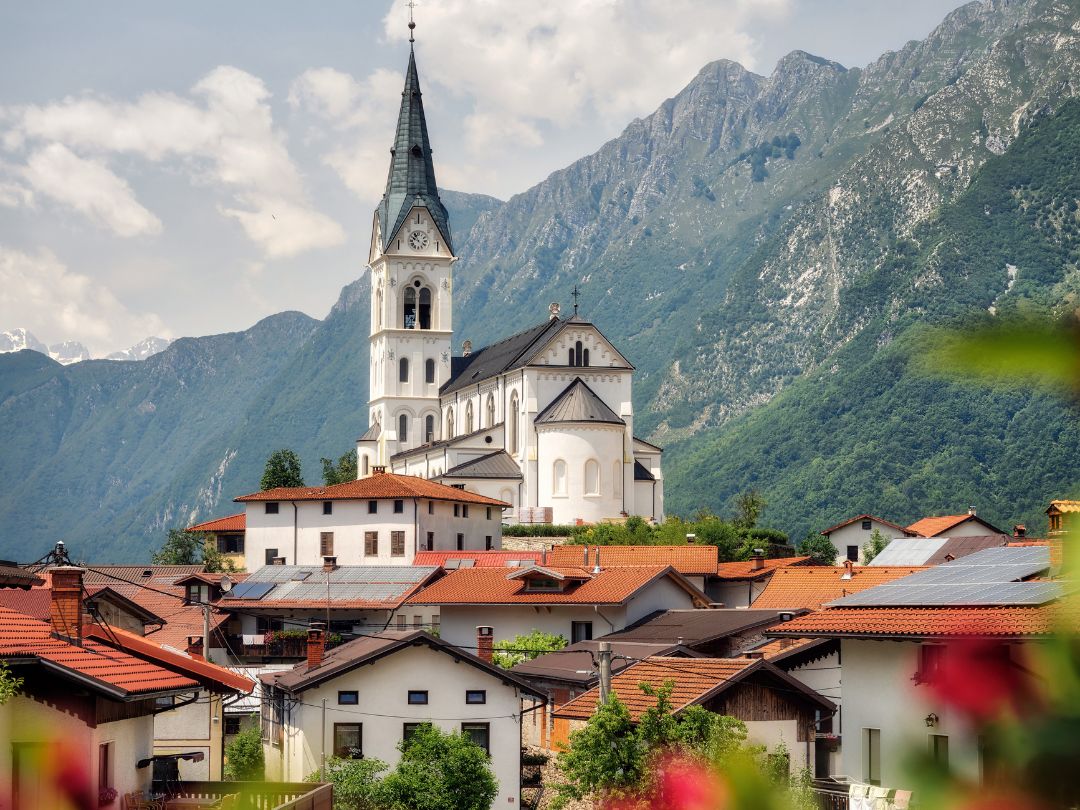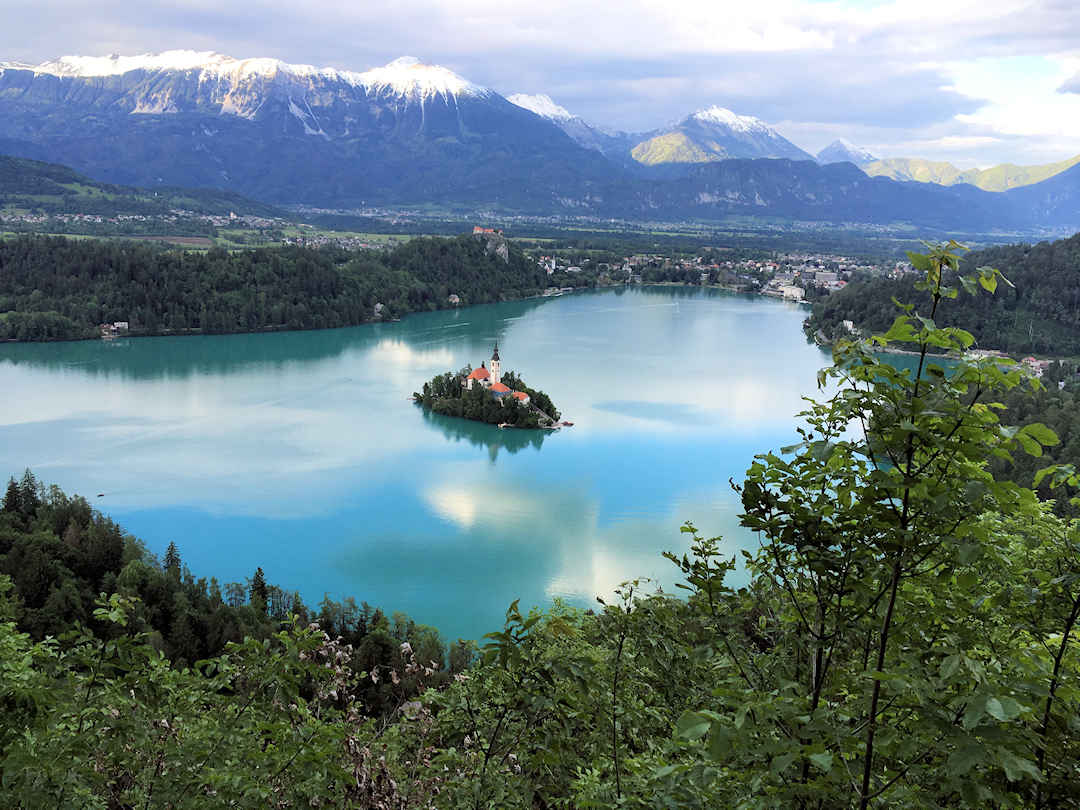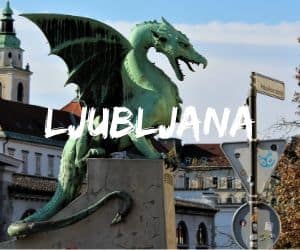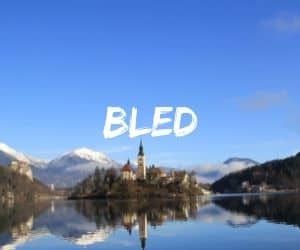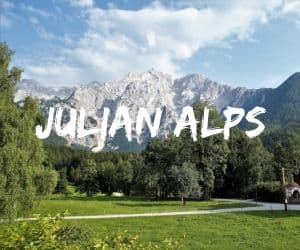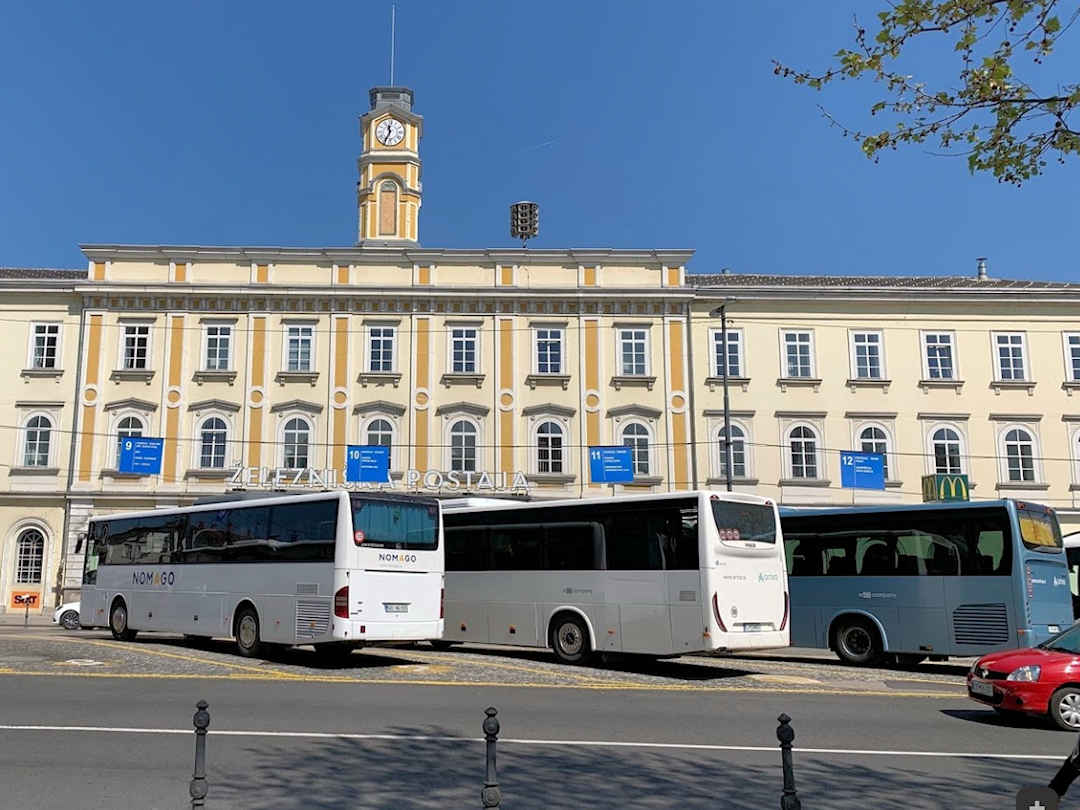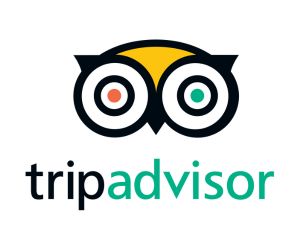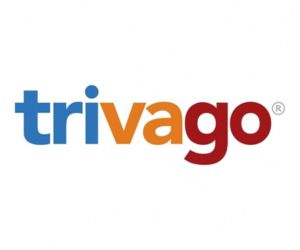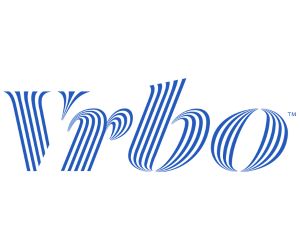As a true Kiwi, there are few countries in the world Paul considers on par with or surpassing New Zealand when it comes to natural beauty. Iceland, Norway and Ecuador are strong contenders. And now we’re adding another one: Slovenia. We’d even argue that New Zealand can learn a thing or two from Slovenia when it comes to environmental sustainability.
Most people only make time to visit Slovenia’s capital Ljubljana and nearby Lake Bled. But there are heaps more to see. Our article will talk about the things to see and do in Western Slovenia, beyond the tourist hot spots that Bled and its famous lake have become. But first, let’s have a look at what’s so great about Slovenia.
Download your Sustainable Travel Checklist and show the world you care
As travellers, we should all be aware of our travel behaviour and its environmental, economic and social impact; and make conscious decisions about it. Too often, we hear negative stories in the media about tourists behaving badly.
Here is your chance to tick some boxes and check out what it really takes to travel with a sustainable mindset.
Three reasons why you should visit Slovenia
- Bordered by Austria to the north, Hungary to the east, Croatia to the south/south-east and Italy plus a slither of the Adriatic to the west, Slovenia is small (only marginally larger than New Jersey) but jam-packed with natural beauty and history.
- The streets are clean, waste is being recycled; the people are friendly, and Slovenian cuisine is mouth-wateringly delicious.
- Slovenia was the first former Yugoslavian country that joined the European Union and adopted the Euro, making travelling from Italy, Austria or any other country using the Euro super easy.
So, if you’re reading this because you’re on the fence about whether to visit Slovenia or not: go ahead and book your trip. You won’t regret it.
Other Fun and Interesting Facts About Slovenia
- It is the smallest non-island state having a single and unique official language.
- Borders four countries: Austria, Croatia, Hungary and Italy of which Croatia with 670 kilometres is the longest.
- The population of just over 2.1 million people with 50% living in urban surroundings.
- Ranked number 8 in the world on the 2019 Global Peace Index. New Zealand is number 2.
- According to World Atlas, 54.5% of the land area is protected – making it number 2 on the world list.
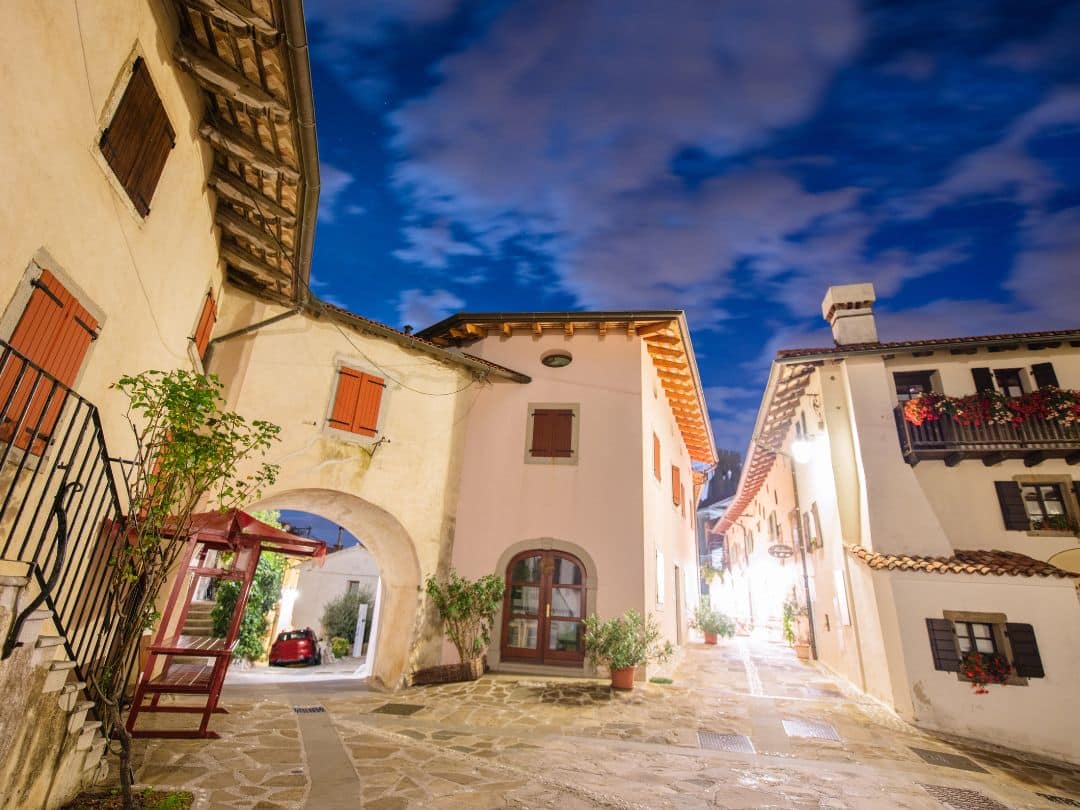
Quaint little towns and stunning landscapes await those who venture off the beaten path
Where to go in Western Slovenia?
Our itinerary starts and ends in Ljubljana and takes you through some of the most jaw-droppingly gorgeous landscapes we have ever come across on our travels. It allows you to experience (in a sustainable way) the best of both worlds:
- historic Ljubljana, and picturesque, but touristy Lake Bled, as well as
- the towering mountains, dense forests and turquoise rivers of the Julian Alps.
When is the best time to visit (Western) Slovenia?
Our favourite travel seasons are late Spring (May/June) and early Autumn (September/October). It’s the perfect time to explore cities and national parks, with fewer tourists and more pleasant temperatures than in summer (or winter). That said, Slovenia could be visited all year round. It all depends on what you’re after.
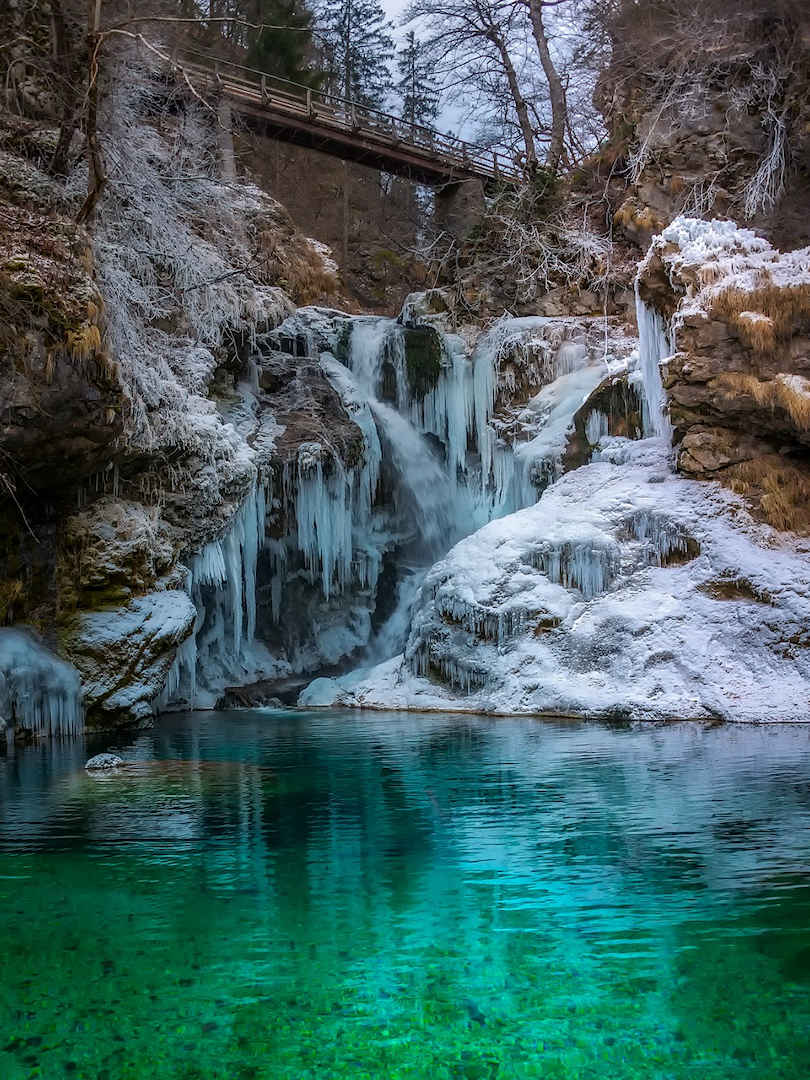
How stunning does Šum Waterfall in the Vintgar Gorge look in winter? | Photo on Pixabay
How to get around Western Slovenia?
We usually prefer more sustainable transport options like trains and buses. So, let’s talk about those first.
By public transport
You can do our itinerary by bus. Just be aware though that it’s not the easiest or most practical option (and it is limited to the summer months – more on that below). We recommend using Busbud for our suggested route.
| From | To | Comments |
|---|---|---|
| Ljubljana | Bled | There are plenty of direct buses daily. |
| Bled | Bovec | Buses only travel across Vršič Pass (Route 206) between 20 June and 30 September. During that time, there are direct buses from Bled to Bovec (in the afternoon). |
| Bovec | Kobarid | There are several direct buses daily by Nomago; also between Kobarid and Tolmin. |
| Kobarid (or Tolmin) | Ljubljana |
Have you seen our other articles about Slovenia?
Discovering the local cuisine is part of the fun of travelling. It also makes for a more immersive and authentic experience if you eat in a local restaurant, chat with the wait staff/chef and learn more about the food on your table. So, while in Slovenia, make sure you taste a few traditional dishes. In our food guide for (Western) Slovenia, we talk about dishes to look out for on the menu (and where to have them).
By car
For our itinerary around Western Slovenia, we recommend hiring a car. We visited end of May/early June when the buses over Vršič Pass were not yet operational. Our 5-day car hire from/to Ljubljana cost us less than EUR100. We hired our car from the local company AvantCar through DiscoverCars and found the service impeccable. They are also conveniently located, only 5 minutes from the central bus/train station in Ljubljana.
If you travel by your own or hired car, note that route 206 over Vršič Pass is closed for about 5 months of the year due to (often heavy) snowfall. Check the traffic information portal for updates if in doubt. If route 206 is closed you can still cross the Julian Alps, just not over Vršič Pass but via the SS54/Italy (which is usually open all year).
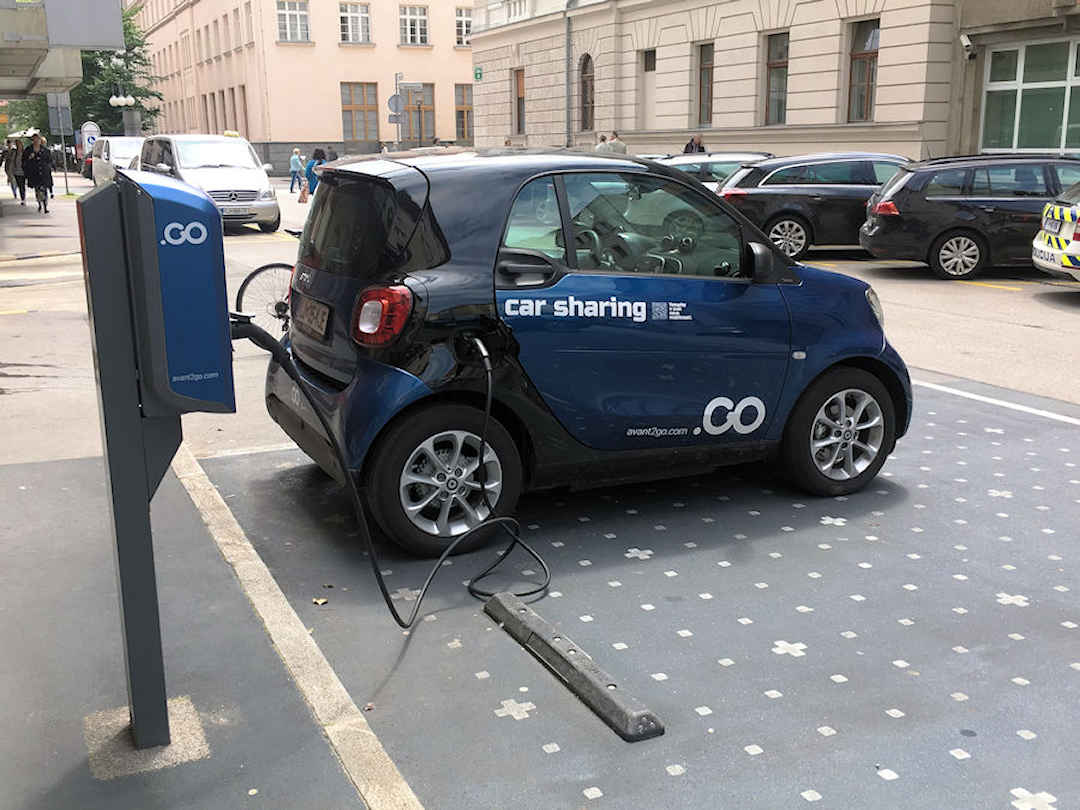
We hired a car to explore Western Slovenia (though not an electric one)
How to save money on experiences
Free activities or experiences
Many activities (and some of our most treasured experiences) are free or cost very little. On our journeys, we have
- Visited many museums free of charge (including the Colosseum and Forum in Rome which are free on the first Sunday of the month)
- Joined Al Green’s Baptist Church Service in Memphis (rather than pay the exorbitant entry fees at nearby Graceland)
- Attended free guided walking tours around the world (you pay a tip at the end based on your budget and how much you liked the tour)
- Did countless self-guided walks and used public transport to get to know a city
- Hiked in the Andes in Ecuador and climbed volcanoes in the Caribbean
- Swam and snorkelled at countless beaches, using tree shade rather than paying for parasols; and
- Attended free performances and danced with locals in Cuba.
Just search for free activities in your destination and chances are someone has made a nice list for you already.
Paid Experiences
Paying for experiences or activities can add up quickly, especially if you're travelling as a family. Make use of family passes (if available). Look out for special deals and discount coupons. If you travel in a group, it may also pay to book a private tour and share the cost. Shop around - here are some of the service providers we have used and can recommend:
Recommended Accommodation
We found the accommodation to be more costly in Slovenia than in other European countries we have visited, especially in Bled. Partially, this is due to the tourist tax charged, which varies from city to city/town to town, and which our hosts collected in cash when they sighted our passports.
We sourced the majority of our accommodation through Booking.com rather than Airbnb. With only one or two nights in one place, Airbnb tended to be more expensive, thanks to its service fee and the cleaning fee that some properties charge. We stayed at the Back Private Rooms in Bled. The other accommodations we stayed at are no longer available to rent. Below are my recommended accommodations for the route.
| StayOrder | Name | Property Features | Location | Type | Price Indicator | EUR Cost Per Night (including Tourist Tax) | Book Now |
|---|---|---|---|---|---|---|---|
| NoStaySlovenia | Penzion Mayer | 3-stars Certain documented environmental practices implemented at property Facilities for disabled guests Buffet and continental breakfast options | Bled | Guesthouse | $$$$ | Book Now | |
| NoStaySlovenia | Penzion Pibernik | Proud certificed property Family-run bed and breakfast Certain documented environmental practices implemented at property. | Bled | B and B | $$$ | Book Now | |
| 2 | Back Hostel | Bunk bed in dormitory (for four) Shared bathroom and kitchen | Bled | Hostel | $ | 29.66 | Book Now |
| 3 | Apartmaji Pri Ticelnu - permanently closed | Bovec | Apartment | $ | 46.00 | ||
| NoStaySlovenia | Cozy Apartment Bovec | Certain documented environmental practices implemented at property Mountain and garden views | Bovec | Apartment | $$$ | Book Now | |
| NoStaySlovenia | Hotel Mangart | 4-stars Restaurant Outdoor swimming pool Wellness and Spa Centre | Bovec | Hotel | $$$ | Book Now | |
| NoStaySlovenia | Hotel Sanje ob Soci | 4-stars Certain documented environmental practices implemented at property. | Bovec | Hotel | $$$ | Book Now | |
| 4 | Apartma Zotler - Not taking bookings as at April 2024 | Kobarid | Apartment | $$ | 49.00 | ||
| NoStaySlovenia | Jelenov breg pod Matajurem | 2-stars Certain documented environmental practices implemented at property. Bar and family-friendly restaurant | Kobarid | Farm Stay | $$ | Book Now | |
| NoStaySlovenia | Apartments Pri nas | 4-stars Certain documented environmental practices implemented at property. Outdoor hot tub Facilities for disabled guests | Kobarid | Apartments | $$$ | Book Now | |
| NoStaySlovenia | Rooms Pri Lovrizu | 2-stars Certain documented environmental practices implemented at property. Shared lounge | Kobarid | Gursthouse | $$$ | Book Now | |
| 1 | Ljubljana Airbnb - No longer listed on Airbnb | Sunny and cozy apartment | Ljubljana | Apartment with own bathroom and kitchen | $ | 44.40 | |
| NoStaySlovenia | Hotel Slamic Ljubljana | Certain documented environmental practices implemented at property 3-stars Bar Breakfast | Ljubljana | B&B | $$$ | Book Now | |
| NoStaySlovenia | Vila Selena | 3-stars Certain documented environmental practices implemented at property Super fast Wi-Fi | Ljubljana | Apartments | $$$ | Book Now | |
| NoStaySlovenia | Oxford Apartments | On-site bar | Ljubljana | Apartments | $$$ | Book Now |
How to save money on accommodation
For accommodation, as with any other travel expenses, it’s worth shopping around. When we book accommodation somewhere, we tend to look across a number of booking platforms to find the best value for money option. Wherever you book, do make sure you read the fine print to make sure you compare apples with apples. For example, your stay may incur extra charges (like local tourist taxes or cleaning fees). Some booking platforms include them, while with others, you have to pay them to your host upon arrival.
Nightly rates are generally cheaper outside of peak season. If you can only travel in peak season, look for accommodation options that are a little further away from the main tourist attractions, yet have good connections by public transport.
We use and recommend the following booking platforms.
How to save money on transportation
Being flexible is what really pays when it comes to transportation and air travel in particular. Travel outside of peak season if you can. If you can't, fares might still be cheaper during certain times of the week and even hours of the day, so check websites like Skyscanner and Google Flights that allow you to see a whole month and all the options on any given date.
If there are several airports in the vicinity of your home (or in the vicinity of your destination) compare the prices between the different options. For example, flying to Mykonos and taking the ferry to Santorini might end up being way cheaper than flying from your home airport straight to Santorini.
We use and recommend the following online travel agents and service providers for our transportation needs:
Airfares
To find good flight deals, we use one-stop travel sites or travel aggregators. Each shows the cheapest airfares on any given day, so you can choose to fly a day/week/month earlier or later, pending your flexibility.
If you find a good deal, book it there and then as prices change constantly. Ideally do your research with your browser in incognito mode, as cookies will show booking sites how keen you are to do a certain trip, which may affect the price quoted – that goes for all online travel bookings (not just flights). The best fares generally go first, so planning ahead is important when it comes to (air) transportation. The same is true if you want to use air points/miles, as there is only a very limited number of seats available for any given flight. We tend to not actually go through the flight aggregators, but book with the airline/s directly. The price is usually the same but we have a direct contract with the airline (rather than with the middleman) in case something goes wrong.
If you plan to travel across multiple continents, you may want to compare passes that offer several destinations as a package (such as around-the-world fares offered by One World or Star Alliance members) vs booking each leg of your trip individually. If you are travelling during peak season those multi-destination packages may be a better deal than booking each leg individually. You can do overland sections on around-the-world tickets too, which means you could supplement your around-the-world ticket with cheap flights, bus and train rides in between destinations.
Vehicle rental (including relocations)
Unless your trip takes you across oceans, another way to save on transport is to look for vehicle/motorhome relocations. There are websites in many countries offering massively discounted one-way rates (often including fuel and/or insurance) to those driving a vehicle/motorhome from A to B within a certain period. These deals are fairly last minute, and A and B are usually bigger transport hubs, but if that’s an option just search for vehicle/motorhome relocation at your destination.
Speaking of vehicles: If you are planning to hire a vehicle at your destination, it also pays to shop around. We use and recommend Discover Cars, an aggregator website that allows you to search across major car rental companies at once. And you don’t have to pay for the hire until you pick up the car.
Hitchhiking
A final option to save on transport costs is… to hitch a ride. While Paul and I did it safely in Dominica on a public holiday (when there was no other option), and we have taken plenty of people along in our campervan in New Zealand, there are many countries we wouldn’t feel safe hitchhiking. Judge for yourself where and when you can and can’t do it.
If you have visited Western Slovenia recently, what was your experience like? What other tips can you share?
I wrote this Western Slovenia travel guide based on our own experience. If you have been to Slovenia, and in particular, Western Slovenia as well and you have something to add to this list of things to do, please feel free to contact me. If you want to visit, what additional questions do you have about Western Slovenia? If you liked my tips and found them helpful, I would appreciate if you could share them with your friends and family via the Share buttons below. Even better, link to the page from your personal blog or social media platforms.

